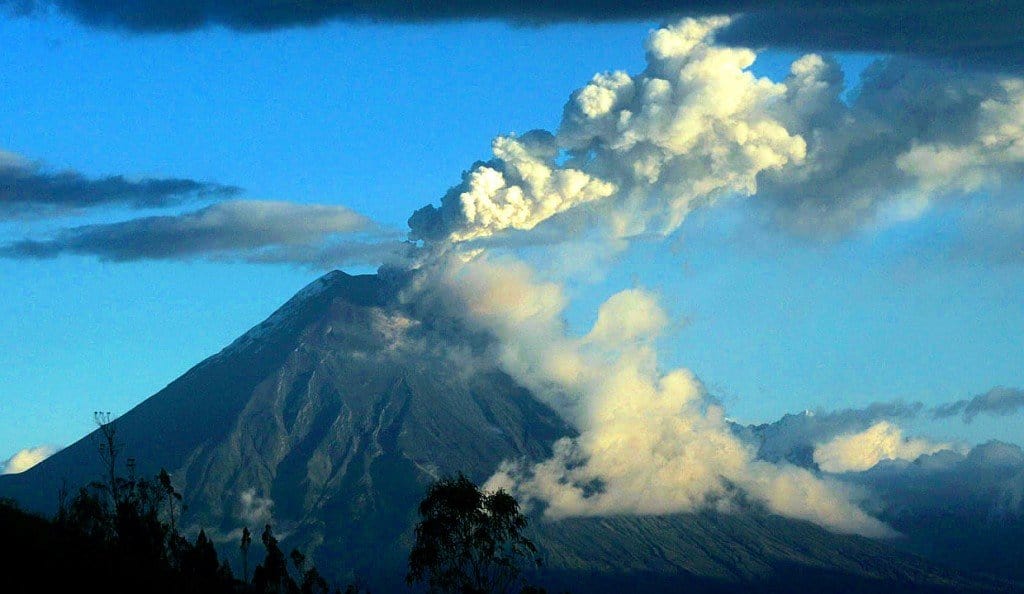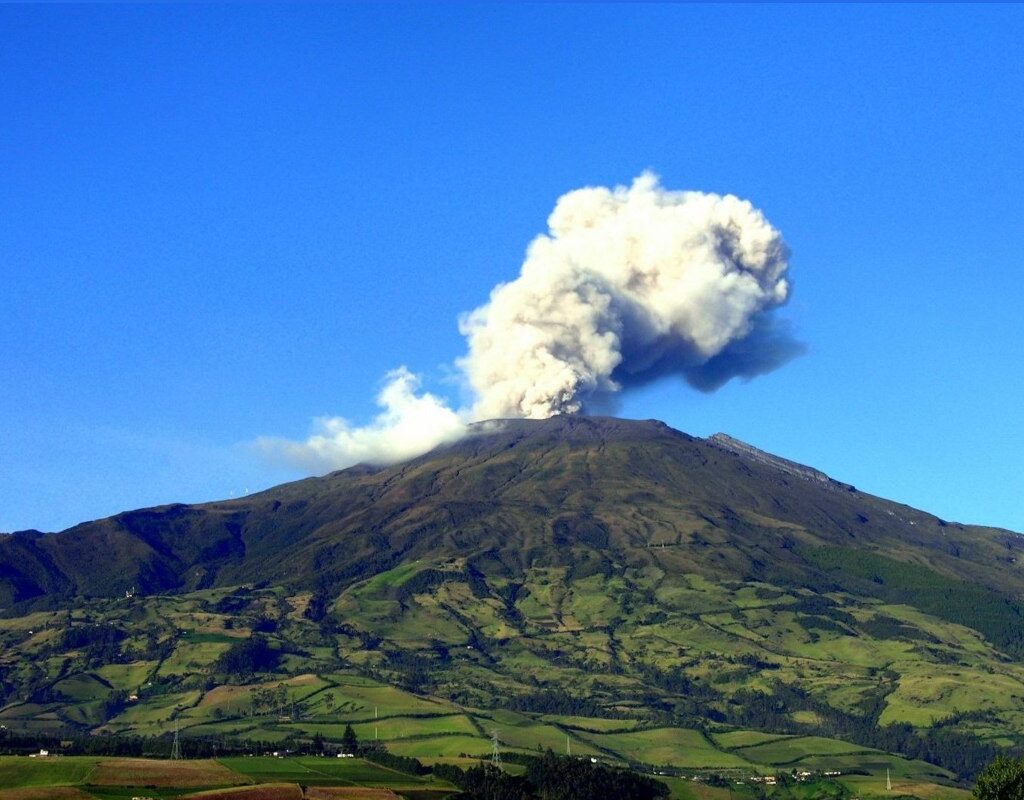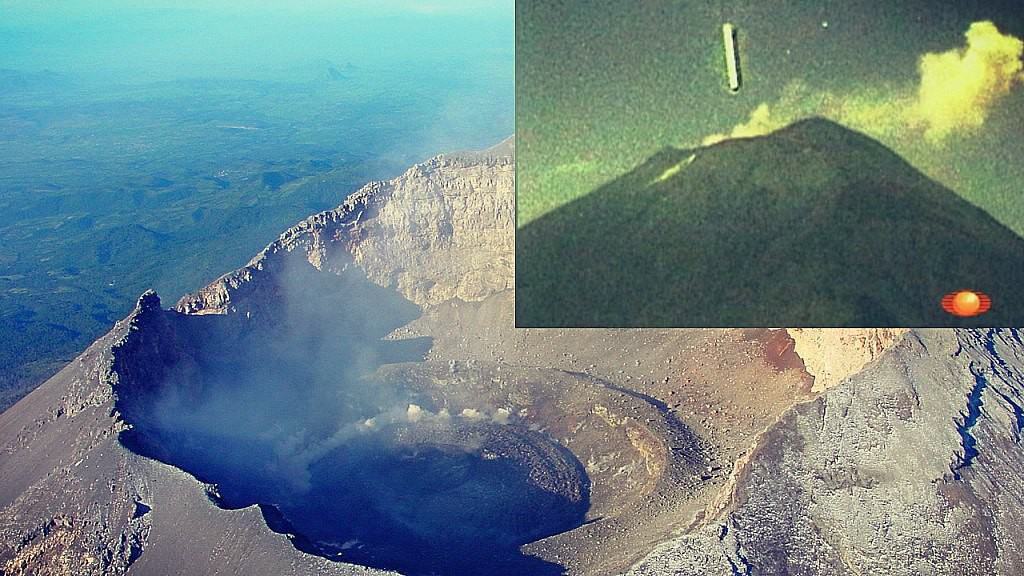The Tungurahua Volcano stands majestically in the heart of Ecuador, serving not only as a natural wonder but also as a testament to the Earth’s indomitable strength. Throughout its history, this colossus has captivated and, at times, instilled fear in the communities surrounding it with its volcanic activity.
The Giant’s Shadow: Between Beauty and the Awakening of the Tungurahua Volcano
The allure of this giant extends beyond its imposing physical presence, touching upon its intricate geological history. This history provides valuable insights into the processes shaping our planet, acting as a living testament to the dynamics of the Earth.
Moreover, as we progress into the 21st century, Tungurahua remains active, reminding us of the Earth’s constant evolution. Its activity is not only a fascinating field of study for scientists but also presents challenges and opportunities for the communities living alongside this giant. In this way, the volcano, with its periodic eruptions, has shaped the life, culture and economy of the region in profound and lasting ways.
Exploring the history and activity of Tungurahua, we delve into a narrative that intertwines geology with humanity. This often complex relationship teaches us about resilience, adaptation and a deep respect for the forces of nature. Thus, Tungurahua is not just a witness to Ecuador’s geological history; it becomes a key player in the story of its people, molding the landscape and the lives of those under its shadow.
A Millennia-Long Journey: The Voyage of Tungurahua from Its Origins
Roots of Fire: The Formation and Transformation of Tungurahua
Tungurahua, also known as “The Andean Giant,” boasts a history spanning thousands of years. Its origins trace back to Tungurahua I, an andesitic stratovolcano that laid the groundwork for the volcano as we know it today. This original volcano underwent a significant collapse, marking the beginning of a series of geological events that shaped the region. Moreover, Tungurahua II emerged, distinguished by its flows of acidic andesitic lava, showcasing the volcano’s constant activity and transformation.
Furthermore, the changes didn’t stop there. A massive sector collapse, which occurred around 3,000 years ago, left behind a vast amphitheater and triggered an avalanche of enormous proportions. This event not only reshaped the landscape but also set the stage for the next phase in volcanic evolution: the rise of Tungurahua III. This new volcanic cone, formed by the accumulation of volcanic products, signaled the start of a period of rebuilding and intense activity that continues to this day.
Echoes of the Earth: Cycles of Eruption and Renewal at Tungurahua
On the other hand, Tungurahua’s activity has been anything but uniform; it has oscillated between periods of intense activity and times of relative calm. For around 2,300 years, the volcano has undergone phases of high eruptive activity, characterized by the extrusion of lavas and the generation of pyroclastic flows, with the magma composition showing little variation, primarily consisting of basic andesites.
Interestingly, Tungurahua’s eruptions have become anticipated events, occurring roughly once every century. Each eruption follows a pattern: starting with falls of lapilli and heterogeneous pyroclastic activity, then moving to lava flows or the formation of lava plugs of a more basic composition. The eruptions of 1773, 1886 and 1916-1918 stand out as the most significant in recent history, highlighting times when the volcano displayed its destructive power as well as its capacity for renewal.
Ultimately, this cycle of construction and destruction has defined the relationship between Tungurahua and the communities around it, fostering a bond of mutual respect and continuous adaptation. The story of the volcano is not just a record of geological events; it is a testament to the interplay between nature and humanity.
The Pulse of the Present: Coexisting with an Active Giant
Guardians of the Giant: Innovation and Strategy Against Volcanic Fury
Constant monitoring of the Tungurahua volcano has become a priority for Ecuador. Thanks to advanced technologies and decades of experience, the Tungurahua Volcano Observatory (OVT) plays a critical role in monitoring volcanic activity. Seismic sensors, thermal cameras and other specialized instruments provide real-time data, allowing scientists to analyze the volcano’s behavior patterns and predict potential eruptions.
Therefore, this information is crucial not only for the scientific community but also for local populations, who rely on early warnings to take preventative measures. Furthermore, education and effective communication are essential components of mitigation strategies, ensuring everyone knows how to act in a potential emergency.
Between Ashes and Hope: Impact and Resilience in the Shadow of Tungurahua
Tungurahua’s presence significantly impacts the daily lives of surrounding communities. Affecting areas such as agriculture, tourism and the local economy in profound ways, eruptions, though sporadic, remain a challenge. Lava flows and ashfall can damage crops and pastures, while the uncertainty caused by volcanic activity can deter tourists, affecting one of the region’s economic pillars.
However, coexisting with the volcano has also taught local communities to be resilient. They have learned to adapt their agricultural practices, diversify their economies and leverage the interest that the volcano sparks among visitors from around the world. Thus, education on volcanic risks and risk management practices have been integrated into local culture, strengthening the communities’ ability to respond to future eruptions.
Finally, the relationship between Tungurahua and the people living in its shadow is a testament to adaptation and respect. Despite the challenges, these communities have found ways to thrive, demonstrating that sustainable living alongside one of the world’s most active volcanoes is possible.
A Future Forged by Fire: Lessons and Legacy of the Tungurahua Volcano
The story of Tungurahua Volcano is a tale of power, transformation and adaptation. Through its eruptions and periods of calm, this colossus has shaped not only Ecuador’s physical landscape but also the social and cultural fabric of the communities around it. These transformations underscore the deep and complex intertwining of nature and humanity.
Moreover, constant vigilance and learning from each volcanic activity episode highlight the importance of resilience and preparedness against natural forces. This ongoing process of observation and adaptation mirrors the dynamic relationship between the inhabitants and their environment.
Furthermore, coexisting with Tungurahua teaches a valuable lesson about human interaction with the environment. Adaptation and respect for nature are not mere options; they are essential needs for current and future generations. This understanding emphasizes the need for developing a harmonious and sustainable coexistence.
Similarly, the communities living under the volcano’s shadow exemplify human capacity to face challenges, turn adversities into opportunities and live in harmony with an unpredictable giant. Their example inspires others to view resilience and innovation as pillars for survival and progress.
Ultimately, Tungurahua represents a link between the past and the future, between the land and the people, between risk and opportunity. Its presence is a constant invitation to explore, understand and respect the complex dynamics that define our world.




